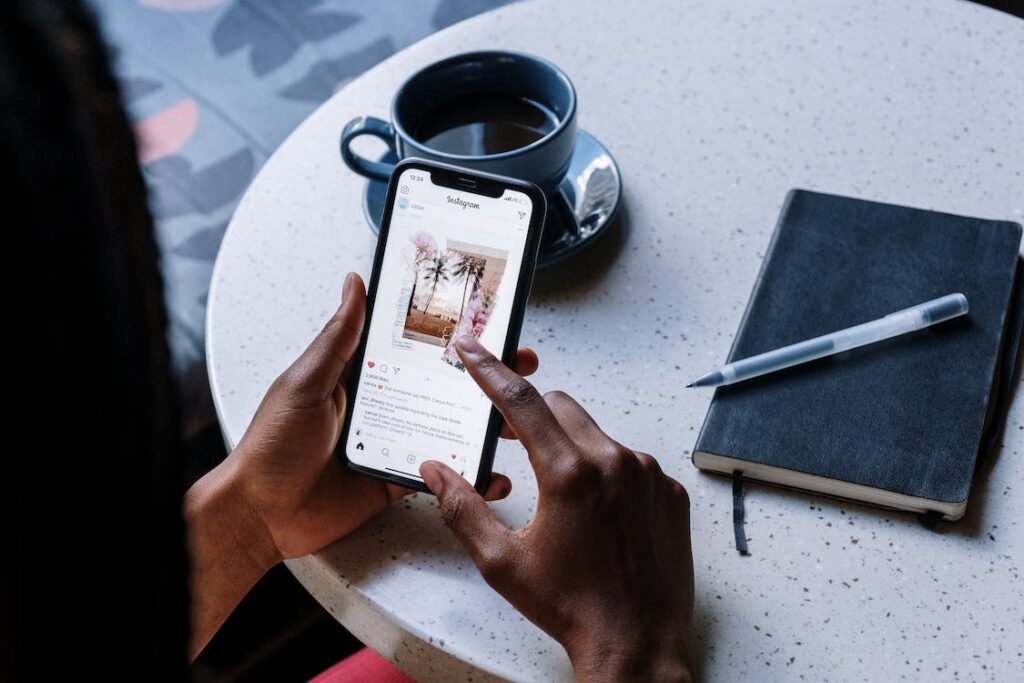LinkedIn boasts over 810 million members, and according to the Microsoft’s purchase of it in 2016, LinkedIn is valued at $26.2 billion. The company receives over 1 billion interactions every month.
That number is expected to grow as LinkedIn continues to incorporate more of the workforce into using the platform.
Why Use LinkedIn for Lead Generation
LinkedIn is one of the most popular social media platforms in the world. With over 500 million members, it allows users to connect with one another based on their professional interests and experience.
It’s also been designed to be incredibly search-engine friendly; this means that when people are looking for products or services, they’re likely to turn to LinkedIn first as they look for reviews and recommendations from professionals they trust. That’s why lead generation on LinkedIn is so effective right now!
And unlike other social media platforms like Facebook and Twitter, LinkedIn is all about helping professionals connect with one another professionally—it’s not a place where you’d go to check out what your friend ate for breakfast or see the latest celebrity gossip (though those certainly have their place in social media).
When you combine the high level of trust people place in professional networks like LinkedIn with its high-ranking position in search results, it makes sense that any company looking to grow would want to take advantage of the opportunities provided by LinkedIn. Plus, it’s hands-down the best platform for generating B2B leads.
RELATED POSTS:
- Build More Followers on Twitter and Monetize It
- Skyrocket Your Instagram Followers’ Count Immediately
- How to Get More Views to Your Instagram Reels
- How to Use Instagram Reels to Grow Your Small Business
- How to Create a Successful Instagram Giveaway
How to Use LinkedIn to Generate Leads
Most have you believe lead generation is a very simple process. However, this often leads to the generation of the wrong kinds of leads – ones which do not convert into customers.
In order to generate the right form of leads – ones who are prospective customers for your business, you need to be very clear with your objectives for generating leads on LinkedIn.
You need to be clear as to whether the leads that you generate are in their buyer stage or are in their impression stage (that is, are you trying to make immediate sales or are you trying to improve your branding?). Both are important and both have their pros and cons.
Your Objectives for Generating Leads on LinkedIn
The first and most critical stage in good marketing is to define your objectives.
It clarifies your campaign’s aim and direction, as well as the strategy, tactics, and key performance metrics. While this is true for every marketing campaign, it is especially important on LinkedIn because this social media is designed for goal-based advertising.
Pay careful consideration to your LinkedIn marketing goals because each campaign goal is tailored to users who are most likely to perform your desired action based on prior and projected platform data.
Create a LinkedIn Lead Generation Strategy to Build Leads on LinkedIn
Like any other marketing efforts, having a strategy helps a lot. You can’t just do several things at different times and expect results.
Here’s how you frame a strategy for lead generation on LinkedIn.
#1. Have a Strong Organic Presence on LinkedIn
This one’s a sine-qua-non. There’s no way in hell that you can start building leads without having a strong organic presence to back you up.
While, having just a complete profile can be enough, here are three ways you can actually create a strong organic presence on LinkedIn and start generating high quality and relevant leads.
Update Your Profile and Post Regularly
This one is pretty self-explanatory. Having an updated profile is crucial for both inbound as well as outbound lead generation as it is the number 1 factor for increasing trust with your audience.
Posting frequently and more importantly, on a consistent basis helps accustomize your audience to your posts. This increases your audience size and builds trust as well.
Create a LinkedIn Page for Your Company
Creating a own LinkedIn page for your business helps in –
A. Creating thought leadership and deliver exciting material to your audience by using storytelling as your primary means of communication.
B. Display your business culture, develop your corporate image, and include your colleagues as active members of your LinkedIn community. A great way to ensure that is to make sure that your employees too, rock a well-made LinkedIn account.
C. Share updates that your audience can use right away to promote your brand.
D. Finish your LinkedIn Company Page because Pages with complete information receive 30% more visitors every week and are more likely to appear on LinkedIn searches.
E. Link your Company page up with three hashtags to help increase its exposure on LinkedIn searches.
Use LinkedIn Groups to Get Noticed in order to Generate Leads on LinkedIn
Here’s how to use LinkedIn Groups to generate leads on autopilot:
Find the best groups for you. The first step is finding a group that has enough active members talking about things that are relevant to your business. For example, if you sell marketing automation software, then “Marketing Automation” would be an ideal group for you.
Join the discussion. The next step is participating in the conversation. It’s important to add value by sharing useful thoughts and advice when appropriate.
Avoid spamming your sales pitch — you want to get to know people and start building relationships before pitching them on your product or service.
Monitor conversations for opportunities. Once you’ve built up some credibility as a regular contributor, you’ll start seeing more opportunities to pitch your product or services (and to spot potential leads).
You might see someone ask a question that you can answer using your product, or someone complain about the limitations of their current solution (which yours could help solve).
#2. Target Your Potential Leads with Extreme Specificity
Spraying and praying used to be a tactic deployed by marketers to reach a very high number of audience in quite a short period of time. Unfortunately, the conversion rates are very poor and its success rate is decreasing day by day.
As such, you need to adopt more of a sniper approach wherein you target only those users who may have a strong need for your product or service.
LinkedIn has a lot of useful features that allow you to perform advanced search. You can narrow down the search results by using different filters and keywords. For example, you can find LinkedIn users by:
- Location (city, country)
- Industry (software development, banking, e-commerce)
- Company name (Google, Apple, IBM)
- Job title (project manager, CTO)
- Skills (Android Development, Java Programming)
Try to find business owners who have just raised a round of funding. They are the ones who are most open to buying a new product or service.
Consider Paid Sponsored Updates for More Reach
Paid LinkedIn Sponsored Updates are a great way to get your content in front of your target audience. They have the potential to reach more people than a standard update, and a far greater reach than most other social networks.
But the problem is that most people use it incorrectly. The result is that they get very low engagement and hardly any leads.
Here is a checklist that you want to get right everytime you create a sponsored update –
1. Use Lead Generation Forms (and include them in your updates)
2. Use an image with every update
3. Don’t link directly to your landing page
4. Target companies (not just job titles)
And, most importantly include a Call-To-Action (CTA).
If you want people to take action after reading your content, you need to tell them what you want them to do. A CTA lets users know how they can access or download the content they just read about or find out more information about your product/service/company, so it’s vital in lead generation campaigns on LinkedIn.
- Related Read: How to Improve Your PPC Ad Campaign Results
Create a Warm Audience
A warm audience is an audience that already knows you and trusts you. It’s not a good idea to sell to them right away. Instead, when you first meet someone, or even the first few times you meet them, your job is to establish trust.
If people don’t trust you they won’t buy from you.
The best way to get someone to trust you is by showing them that you understand their biggest challenges and that you can help them overcome those challenges.
Here are three tips to help you create a warm audience on the platform.
1. Find your ideal target audience.
Search LinkedIn by industry and job title to see who you could reach out to. If you’re targeting small business owners, for example, check out LinkedIn’s Companies search to find firms with 10-100 employees in your area. You can also narrow down your search by industry and location.
2. Reach out to your ideal prospects.
Make sure that the first thing they see when they visit your profile is a description of their pain points and the solution that you offer. In other words, make it clear how you can help them right off the bat, so they don’t ignore your request or think that all you want is a connection for the sake of having more connections on LinkedIn.
- Related Post: 19 Experts share How they Improve their Email Outreach Effectiveness by Leaps and Bounds!
3. Keep in touch with them regularly, so they don’t forget about you when they need what you’re selling.
LinkedIn users usually log into their accounts once per week, so post updates at least every seven days to keep yourself top-of-mind with your connections.
#3. Connect with a Purpose
Connecting with people without a purpose can lead to having a very large network, but it won’t be an effective one. Instead, create a strategy that outlines exactly who you want to connect with and why.
For example, if you’re an insurance broker, you might want to connect with CEOs of local companies who currently don’t have their own insurance agent.
By connecting with a purpose, I mean that you want to identify people who could connect you to your ideal prospects.
For example, I may want to connect with the head of sales at XYZ Corporation, but because we don’t have a shared connection, my request might get ignored. However, if we have a mutual connection in common, the likelihood of them accepting my invitation increases dramatically.
If you don’t have any direct connections to your ideal prospects, start networking outside of LinkedIn. Join industry associations or participate in industry events. Focus on meeting people who are connected to your target audience and ask for introductions.
Search for Prospects
The trick is knowing how to use the site’s features to accelerate your search. Here are five ways to find and connect with high-quality prospects on LinkedIn:
- Specify a location
- Include relevant keywords in your search
- Personalize your invitations to connect
- Use the LinkedIn Groups feature
- Keep an eye out for “People also viewed” boxes
#4. Improve Your LinkedIn Ads ROI
There are a few things to take into account when setting up your ads.
First, consider that LinkedIn is a social network. You’ll want to show relevant sponsored content on the site, which should reflect trust and professionalism.
This means that you’ll need a strong ad image and compelling copy. Your headline should be short and concise, but include the keywords that your target audience is searching for.
The first line of the ad should also be short, but again include keywords related to your industry or product/service name.
Second, do your market research. Think about what kinds of people you want to reach with your ad. It’s best if your company is already established on LinkedIn, so that you have access to more targeting options.
If you’re just getting started, it might be best to run an ad campaign for people who are in your current network. When setting this up, do your research by using LinkedIn’s Audience Insights function.
This will show you which groups of people are most likely to engage with your business and what kinds of posts are. However, it is recommended that you use it along with other market research tools for the best effect.
Here are some tips to consider to optimize your LinkedIn ad campaign and improve your ROI for lead generation on LinkedIn:
Include an image: The first thing you see in an ad is the image. Make sure that it’s professional and that it represents your business well.
Own the headline: Take advantage of the opportunity to include a call-to-action in the headline of your ad. Don’t be afraid to be as direct and bold as possible.
Define your target audience: Use the “demographics” tab in the LinkedIn ads manager to define exactly who will see your ad. Research keywords that describe potential customers, so that you can target those most likely to be interested in using your product or service.
Use action verbs: Action-verbs help encourage engagement with users, so use them in both your headline and description. “Save,” “learn,” and “watch” are some examples of action words that can help your campaign succeed.
Final Words – Building Leads on LinkedIn – Consistency is Everything
Consistency leads to more sales. This means you need to generate top-of-the-mind awareness for your brand to your audience. You won’t be able to be on the top of the mind of your intended audience if you are not consistent.
As such, you need to incorporate your LinkedIn lead generation strategy into a daily, weekly and monthly plan and follow it rigorously.
Here’s how we, at WinSavvy, do it for our audience –
-Every week, I go through my entire contact list and send out a message to everyone on my second level – asking them to connect if they haven’t done so already.
-I also create a new post in the groups related to my target market and ask for advice on specific challenges. I try to give as much value as possible in my posts. For this, repurposing content works best. I often repurpose my Quora answers for my LinkedIn audience.
-Lastly, when I’m meeting someone new (at networking events, conferences, etc.) I always ask them if they have a LinkedIn profile and usually follow up with an email afterwards asking them to connect.
Well, that’s all. If you have any questions, let me know in the comments and I’ll get back to you.
If you need help with generating leads, send us an email and we’ll guide you through the entire process!
Read Next:




















